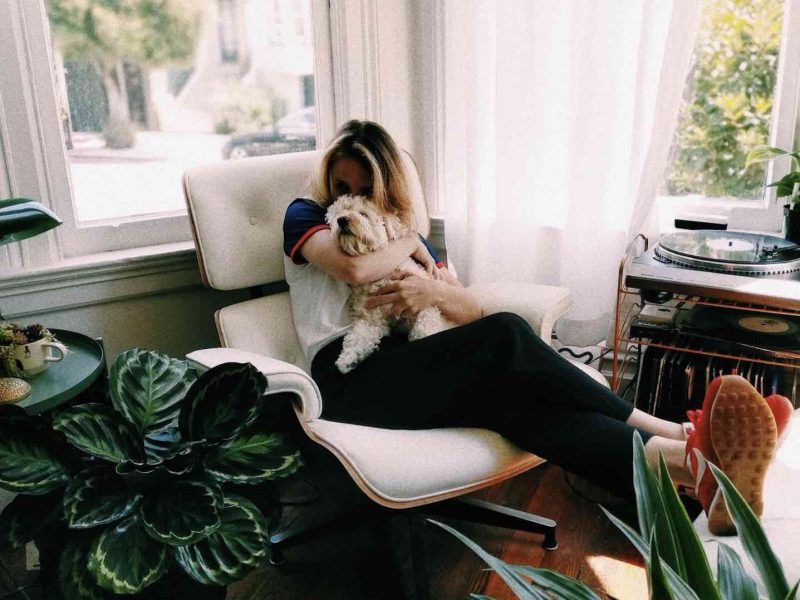
Top Dog-Friendly Houseplants
There are fewer things that we hold as close to our hearts as our pets. We do everything we can to protect them and keep them safe, and it should be no different when choosing the plants for our home. Unfortunately, there are a lot of houseplants that are toxic to dogs and when ingested can cause a whole range of issues for your furry friends. There are also some houseplants out there with sharp leaves or spikes that can lodge themselves into your pet if they aren’t careful.
To keep your dog safe, we have curated a list of the best dog-safe houseplants so you won’t need to worry about a thing. All of these plants will be fine if digested and their leaves won’t prick or hurt your dog either.

Spider Plant
Chlorophytum comosum
Spider Plants are the perfect plant for a houseplant beginner as they are super easy to care for, grow pretty quickly, and produce an abundance of spider babies which can be propagated in seconds.
The best thing about Spider Plants (apart from the fact they are dog safe) is that you would really have to try to kill them as they adapt to and survive in most environments and don’t mind being a little neglected. They even show you when they need more water by going quite light green. But after a little bit of water, they spring back to full health in minutes.
As your plant matures, you’ll start to see it sprouting little spiderettes which you can choose to remove from the plant to create new Spider Plants. They really are the gift that keeps on giving.
Find out more in our Spider Plant care guide.

Rattlesnake Plant
Calathea Lancifolia
Over the past few years, Rattlesnake Plants have gone from being quite rare to being one of the most popular Calathea plants around… and we totally understand why! Not only do they have über-cool markings on their long thin leaves, but they are quite an easy plant to take care of. Although they sound quite dangerous, the Rattlesnake Plant is totally safe for dogs so you don’t need to worry about that!
Native to the Brazilian rainforests, Rattlesnake Plants can adapt to a range of light levels, making them a great choice for those looking for a low-light plant. They also don’t need that much water as their roots absolutely hate sitting in waterlogged soil. The one thing you do need to make sure you do when caring for a Rattlesnake Plant is to boost the humidity either by misting the leaves or by using a humidifier.
Find out more in our Rattlesnake Plant care guide.
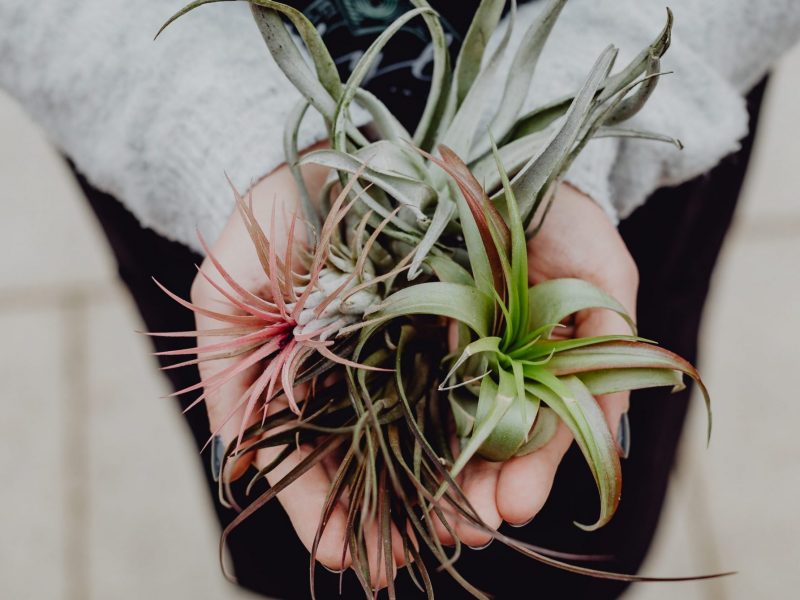
Air Plant
Tillandsia
There are hundreds of Air Plant varieties for you to fall in love with, all with relatively similar care requirements and all are safe for dogs. If you haven’t already guessed from the name, Air Plants are pretty different to most other houseplant types as they don’t grow in soil. Instead, all they need is regular misting and the occasional bath to survive!
Native to areas across Central and South America, Air Plants need warm temperatures and high humidity levels to really thrive which makes them great plants for terrariums. But don’t think this is the only way to grow Air Plants, because with a little bit of care and attention to their environment, you can grow them in most homes with no problems!
Find out more in our Air Plant care guide.
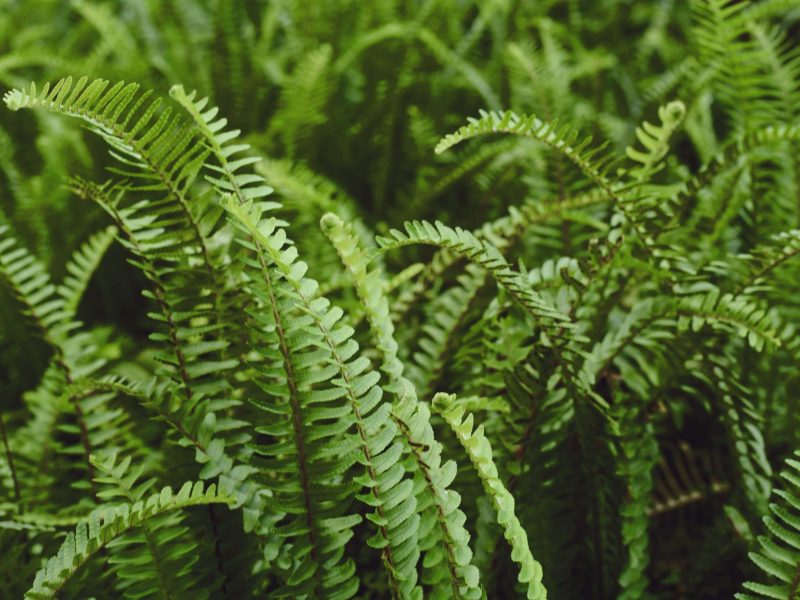
Boston Fern
Nephrolepis exaltata
If you want to bring some jungle indoors, whilst keeping your puppy safe, then the lush Boston Fern is the go-to! However, looking after them isn’t always easy as they can be a little fussy when grown indoors. There are two main things that your Boston Fern needs; bright sunshine and high humidity. This means you need to be prepared to mist your Fern daily to avoid crispy leaves.
The one downside we find to owning Boston Ferns is that they do shed a lot of leaves so you’ll find yourself tidying up after it quite a lot. This is why it’s super important that it’s dog safe, as there will be a lot of leaves lying around that your dog might try to eat. Another great thing about Boston Ferns is they are pretty cheap and you shouldn’t run into too much trouble finding them in plant shops around the world.
Find out more in our Boston Fern care guide.
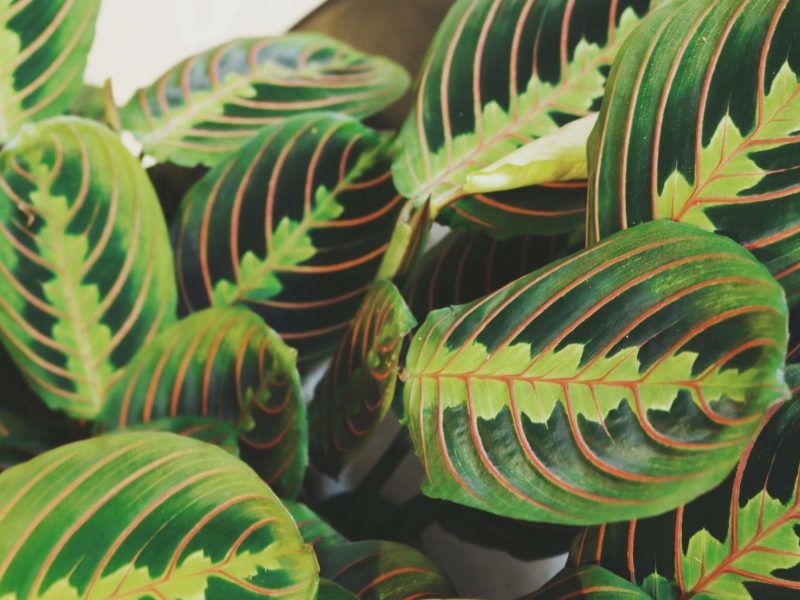
Prayer Plant
Maranta leuconeura
Native to the tropical rainforests of Brazil, the Prayer Plant is loved for its variegated leaves with intricate vein patterns. You can easily spot a Prayer Plant by its leaf undersides as shades of deep red are revealed when the plant’s leaves curl up at night, bringing a splash of colour to your home.
There are several varieties of Prayer Plants that all look ever so slightly different but they are all completely dog safe which is great. The most common variety is the tri-colour which has red-veined leaves but you’ll sometimes see varieties with silver patches or dark green splashes. Prayer Plants are a little fussy though with light conditions, soil moisture and humidity levels though so we don’t recommend this as a starter plant, unfortunately.
Find out more in our Prayer Plant care guide.
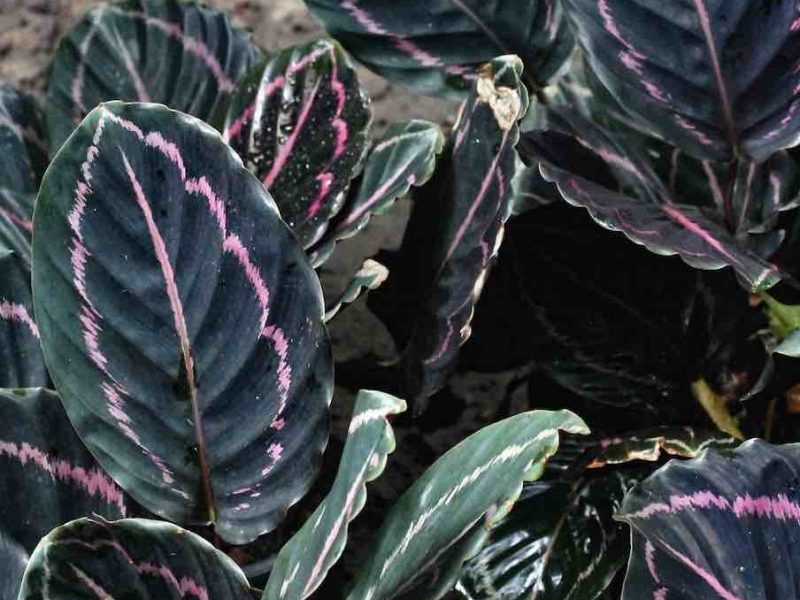
Calathea Dottie
Calathea Roseopicta Dottie
With large glossy dark green (almost black) leaves, the Calathea Dottie is a plant for those who want to make a statement. Each leaf has a bright pink outline which you won’t see on any other plant! Native to South America, it’s important that Calathea Dottie plants are placed somewhere warm with a good level of humidity and bright but not direct sunlight. Without this environment, your plant will really struggle.
If you aren’t already sold on this plant just by looking at the incredible leaves, then we have a couple more reasons. Firstly, they purify the air in the room which helps us sleep a little better. Calathea Dottie plants aren’t as common globally so you might need to take a look in more specialised plant shops and nurseries to find them.
Find out more in our Calathea Dottie care guide.
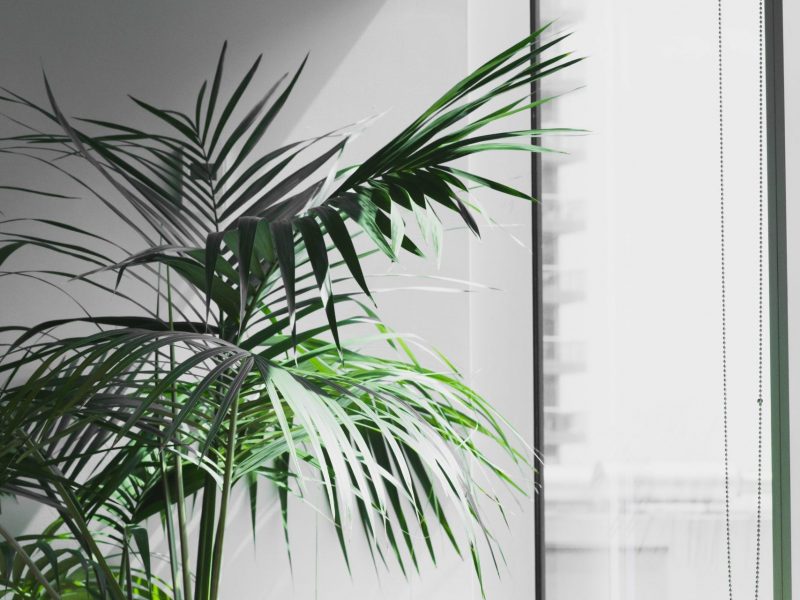
Kentia Palm
Howea forsteriana
Kentia Palms are pretty hardy plants that can stand environments that many other houseplants wouldn’t be able to, making them quite easy to care for. They can grow up to 40 feet outdoors but will rarely get over 13 feet when kept indoors.
They can be quite fussy about watering however and prefer to get little and often as this stops their soil from drying out completely or being soggy for longer periods of time. They also aren’t great with having dusty leaves, so we recommend wiping them down with a damp cloth every now and then to keep them clean.
The good news is that they are completely safe and non-toxic, so perfect for homes with pets or kids!
Find out more in our Kentia Palm care guide.
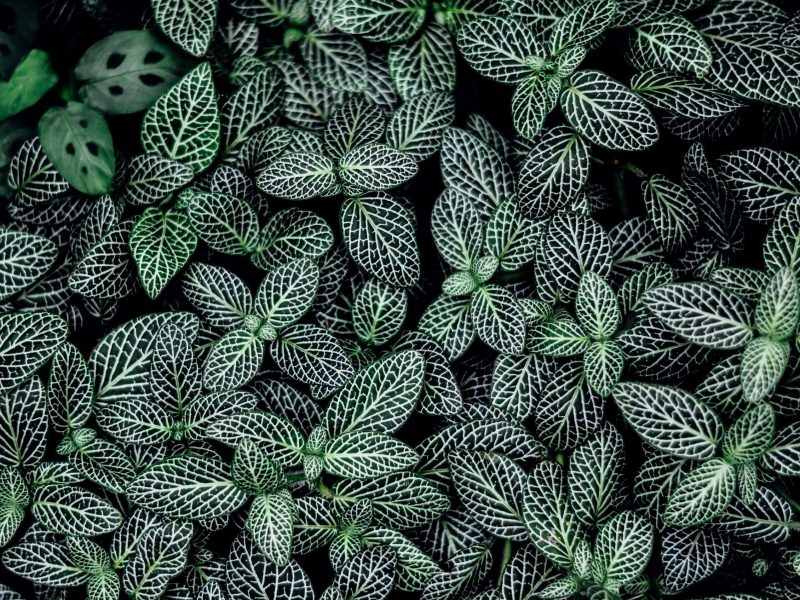
Nerve Plant
Fittonia albivenis
With delicate leaves, Nerve Plants are low-growing spreader plants that aren’t always the easiest to care for. The most popular and common variety is silver and green-veined, though you’ll also often spot varieties with white, pink or red veins and leaves too! They also have quite a worrying name, but we can assure you that they are totally non-toxic so are safe to have around dogs and other pets, as well as small children.
They have quite specific care requirements though so we don’t tend to recommend them to beginner plant parents as they are quite fussy about balancing the level of light, water, humidity and temperature. If there is one tip we can give you it would be to mist your plant at every opportunity you have to prevent them from drying out.
Find out more in our Nerve Plant care guide.
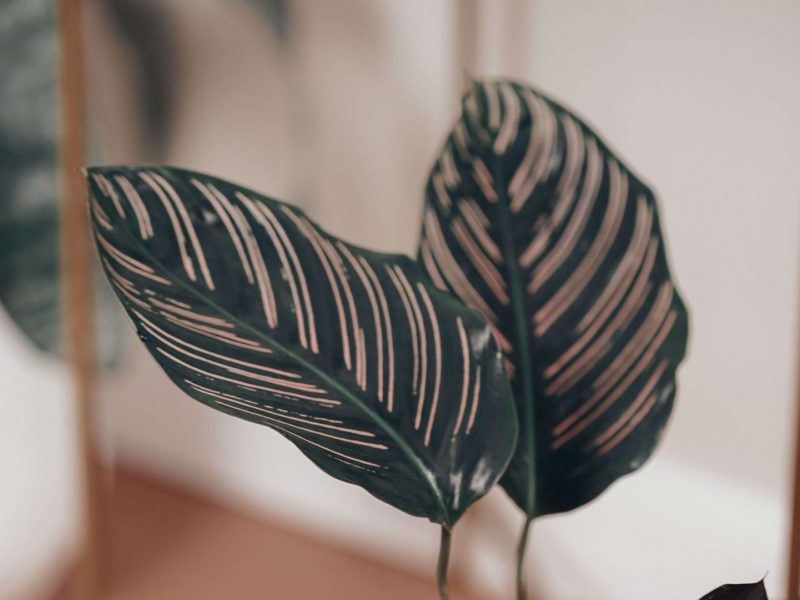
Pinstripe Calathea
Calathea ornata
This is probably one of our favourite houseplants here at Fiddle and Thorn. Whilst they are a little fussier than a lot of other plants, their stunning pink striped leaves really make up for it. Their dark green glossy leaves can reach up to around 30cm when your plant starts to mature, so they really stand out in a room of plants.
Native to South America, these plants need high humidity or you’ll very quickly see dry leaf edges appear. You also want to keep them away from intense light or the pink stripes will start to fade which is always devastating. There aren’t that many pink plants that are non-toxic so this is a great option if that’s what you’re looking for.
Find out more in our Pinstripe Calathea care guide.
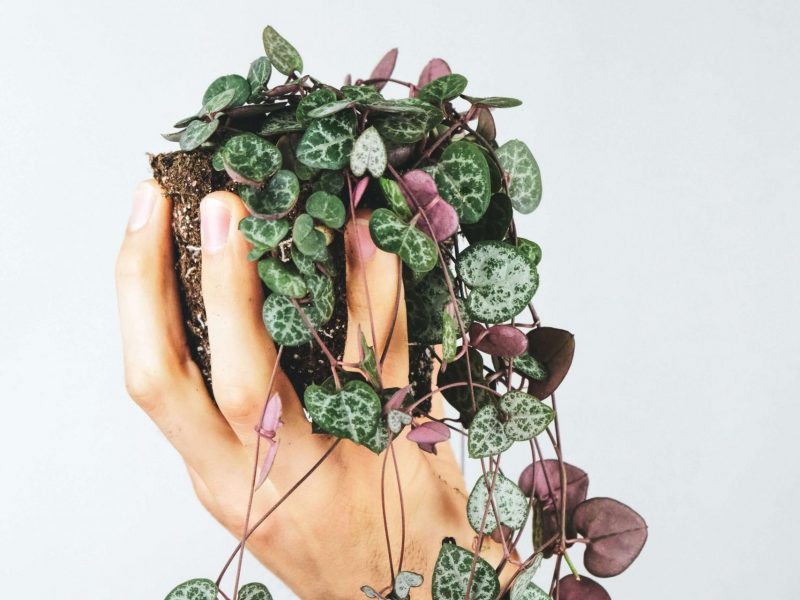
String of Hearts
Ceropegia woodii
Native to South Africa, the String of Hearts should be top on your list for trailing houseplants. You don’t get much more unique than their speckled heart-shaped leaves. The other thing we love about the String of Hearts is that it’s such a fast grower over the spring and summer months, you’ll blink and there will be two new leaves popping out somewhere.
The String of Hearts is a semi-succulent plant meaning they don’t need much water, otherwise, it’ll cause their delicate shallow leaves to rot pretty quickly. Oh, and because they have such shallow roots, you won’t need to repot for a very very long time.
It makes the perfect plant for hanging down shelving, and because its dog friendly, you don’t need to worry about it ever becoming too long!
Find out more in our String of Hearts care guide.














